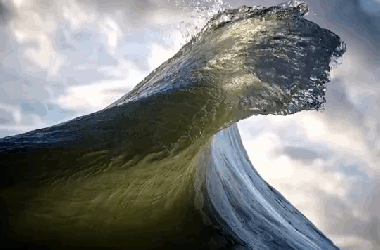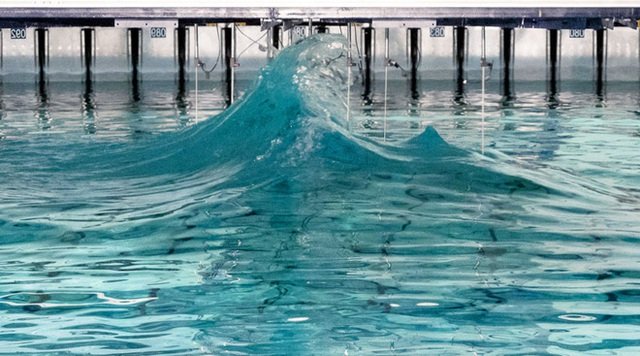
The mystery of the 'ocean monster' challenges the scientific community: 'Tearing apart' 22 aircraft carriers, killing more than 500 people 2
Rogue waves – with many different names including killer waves, fierce waves, toxic waves, giant waves or monster waves – are scary and mysterious `giants` of the sea.
Why does this kind of evil wave appear?
Two weeks before Christmas 1978, the cargo ship MS München (Germany) encountered a fierce storm in the North Atlantic.
The entire crew of 28 people completely disappeared in the deep ocean.

The most special clue of this tragedy left investigators confused.
The vast ocean accounts for 3/4 of the Earth’s surface, tens of thousands of meters deep, so sailors for centuries (through their experience) have known the horrifying obsession that researchers fear.
While sailors spread stories about monster waves, incredibly high, capable of swallowing large ships, the scientific community is still looking for the most authentic data.
Many scientists doubt the existence of killer waves because their appearance does not fall under any ocean wave rules, and moreover, there is no scientific evidence about them, instead they are just rumors.

This skepticism changed on New Year’s Day in 1995, when a monster wave rose and attacked the Draupner oil rig in the Norwegian North Sea.
Equipped with a downward-facing laser, Draupner’s imaging system captured a 26-meter-high wave in a high-resolution photo.
Since then, researchers have determined that the monster/killer wave could appear suddenly, independently and massively, possibly destroying 22 aircraft carriers and claiming more than 500 lives in just
The scientifically proven occurrence of Draupner’s killer waves prompted physicists to find out exactly how these giant single waves could arise.
Researchers have proposed two main theories.

The first theory, observers say, is that ocean waves move at different speeds.
Oceanographers have long used this method to calculate the likelihood that a killer wave of a certain height will arise, but that forecasting method remains controversial, because of its drawbacks.

The second theory, according to other scientists, is that killer waves form from a more complex mechanism.
Experiments in wave tanks show that when one wave travels right next to another wave of similar length, energy leaks from one wave to the other.
The problem is…
Could this effect, known as nonlinear focusing, have sunk the Munich?

Other researchers agree that we don’t know much about the real ocean.
`On the real ocean, both mechanisms may be relevant` – concludes Amin Chabchoub, a wave physicist at the University of Sydney (Australia), who co-authored a review of the debate in 2019.
`The ocean is too chaotic, too mysterious. Before killer waves can be decoded, they still naturally exist anytime, anywhere on this Earth!`
The article uses source: Quanta Magazine



